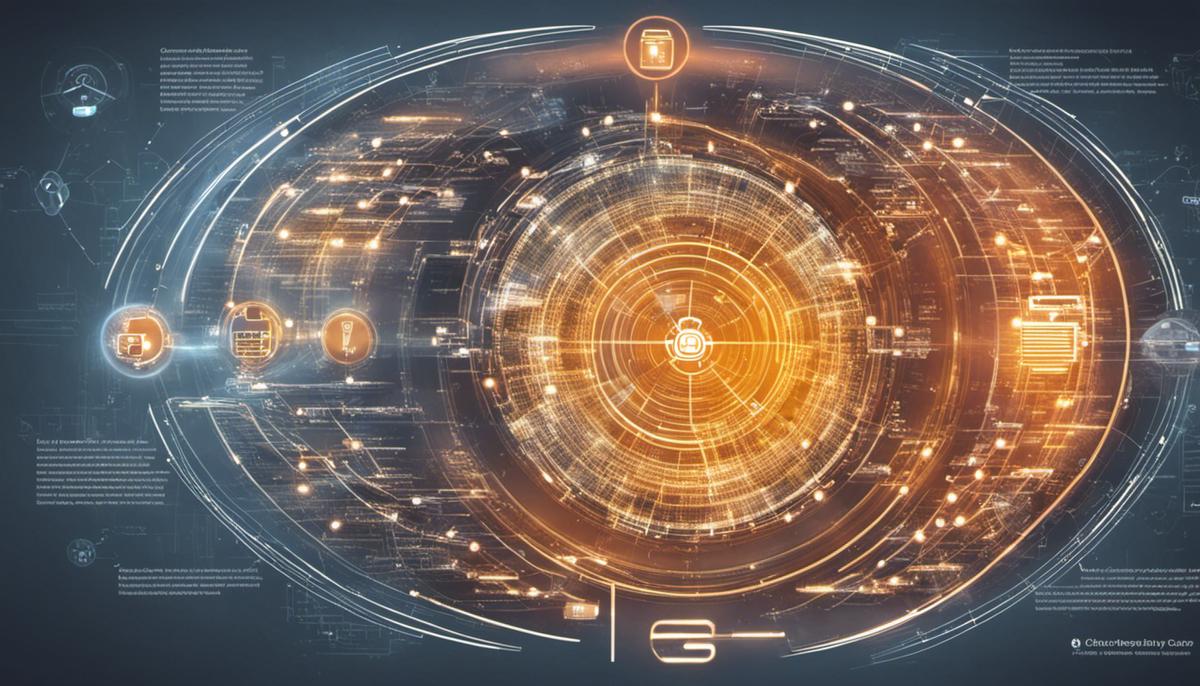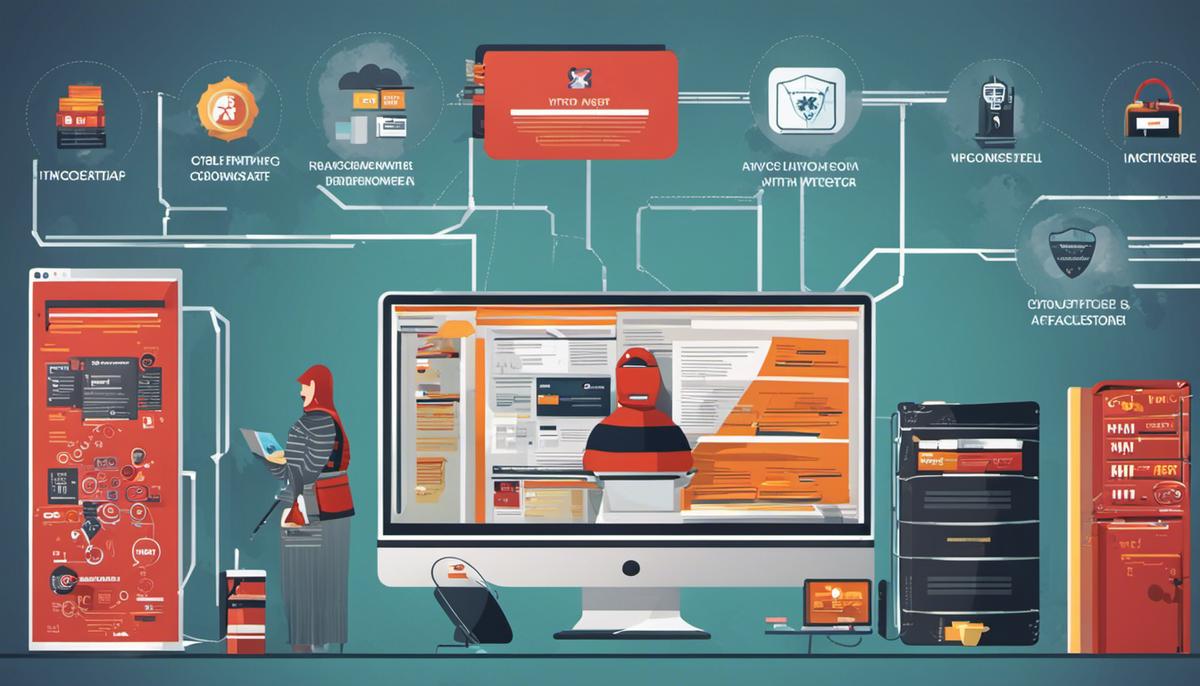In the fast-paced, digitized world of today, cybersecurity is of pivotal importance. Ensuring the protection of sensitive information and systems from damaging breaches has become a non-negotiable necessity. The cost of ignorance in this field can be crippling, given the danger of real-world threats continually evolving with technological advancements. Grasping the crux of digital protection—the understanding of basic cybersecurity is no longer an option but an urgency. To this end, this exploration aims to help professionals grasp the essence of cybersecurity while offering insight into its various key elements, common threats, and best practices. The ambition is to foster a leaner, meaner first line of cyber defense—awareness.
Understanding the Importance of Basic Cybersecurity
Understanding Basic Cybersecurity: Non-negotiable in Today’s Digital Landscape
In the swiftly evolving digital sphere, understanding basic cybersecurity has transformed from being optional to indispensable. With an increased dependency on online platforms, the probability of cyber threats has magnified exponentially, making cybersecurity knowledge a must-have in our present-day technology-driven society.
Broadly defined, cybersecurity is the practice of shielding computers, servers, mobile devices, electronic systems, networks, and data from digital attacks. It’s akin to the digital guardian standing between precious data and the plethora of online threats lurking in the shadows, from data breaches, identity theft, and ransomware attacks to malicious software.
The reasons why cybersecurity awareness is paramount are multifold. First and foremost, the sheer volume of our lives that exists online makes us all potential targets. From communication on social media, shopping, and banking to operating smart home devices, the online realm holds a vast amount of personal data, credit card details, and more.
Secondly, the advancement in technology translates to more sophisticated cyberattacks. With technology’s continuous progression, attackers are leveraging advanced methods, exploiting vulnerabilities, and finding innovative ways to breach defenses. Therefore, keeping a step ahead through robust cybersecurity practices is essential in the rapidly advancing digital frontier.
Additionally, with the surge in remote working culture due to the pandemic, entities—both individuals and businesses, are more susceptible to cyber threats than ever before. Work-from-home setups often lack the network security measures that are typically in place in an office environment. This makes those working remotely attractive targets for cybercriminals, necessitating a sound knowledge of basic cybersecurity measures.
A ground understanding of cybersecurity can assist in identifying phishing scams, which often take the guise of trustworthy entities to trick individuals into providing sensitive data. By recognizing such threats, individuals can better protect their digital resources.
Moreover, basic cybersecurity education underscores the significance of effective passwords and the use of two-factor authentication (2FA). A strong password and 2FA implementation add an additional layer of security, making it harder for hackers to access your accounts.
Lastly, in a society where automation is the order of the day and manual chores are increasingly replaced by automated alternatives, failing to secure these functionalities is inviting hackers to exploit them. A grasp of elementary cybersecurity principles helps ensure that automation becomes an asset rather than a liability.
Though it may seem daunting, understanding basic cybersecurity does not require a background in computer science. It can be simplified to easy-to-follow measures like updating and patching software regularly, using a VPN, employing antivirus software, and creating robust passwords.
In conclusion, understanding cybersecurity is no longer a “nice-to-have” but a crucial survival tool in our increasingly interconnected world. Ignorance is not bliss when it comes to digital safety. Arm yourself with cybersecurity knowledge to navigate the digital landscape safely and confidently.
With the digital world at its pinnacle and no sign of it descending anytime soon, embracing cybersecurity knowledge is not an option but a must.

Key Elements of Cybersecurity
Anchoring the Fortress: Key Elements of a Robust Cybersecurity Structure
Right in the heart of an ever-evolving digital era, cybersecurity stands as a pinnacle quest for individuals and organizations alike. Advanced and ambitious as modern tech trends may be, their security aspect cannot be compromised. Complementing the matrix already laid down, this article probes further into the pivotal elements constituting a tough cybersecurity structure.
-
- Intrusion Detection Systems (IDS)
Essential to the security infrastructure of any network, Intrusion Detection Systems play a crucial role in detecting suspicious activity or policy violations. Known as passive systems, they inform the network administration of potential breaches, offering an improved opportunity to nullify threats before significant damage occurs.
-
- Firewall Protections
Firewall protections establish an encompassing digital barrier intended to ward off unauthorized access while enabling outbound communication. Essentially, they create a checkpoint for each data packet entering or leaving a network, thereby providing a formidable line of defense in a robust cybersecurity structure.
-
- Security Information and Event Management (SIEM)
A must-have for any organization, SIEM tools offer real-time analysis of security alerts generated within a technological infrastructure. Harvesting data from host systems, network devices, and applications allows for early detection, hence preventing possible data loss and minimizing damage.
-
- Encryption Measures
Data encryption, an integral part of cybersecurity, transforms data into code to prevent unauthorized access. In a world where data equates wealth, providing strong encryption measures for data at rest, in motion, or during transactions negates prospective breaches, thus bolstering security capabilities.
-
- Incident Response Plan (IRP)
The adage, “Failing to plan means planning to fail,” rings true in the realm of cybersecurity. An efficient IRP prepares an organization to respond swiftly and effectively to security incidents, minimizing recovery time and potential fallout from the incidents.
-
- Regular Audits and Risk Assessments
Regular audits and risk assessments on cybersecurity protocols enable organizations to identify vulnerabilities. A thorough evaluation of IT infrastructure, along with routine security audits, ensures that the applied security protocols remain effective and updated against evolving threats.
-
- End-user Education and Training
Though not a technical tool, end-user education holds extreme significance in a cybersecurity structure. Human errors, whether from ignorance, social engineering, or direct insider threats, continue to pose tremendous risks. Hence, regular training, clear communication, and creating a culture of cybersecurity awareness become an absolute necessity to countervail potential human-related security incidents.
-
- Multi-layered Security Approach
Arguably the most potent weapon in a cybersecurity arsenal, a multi-layered approach prevents single-point failures. Featuring multiple defensive layers across all the physical and virtual resources of a network, it ensures protection if one component is breached, the others remain unaffected. This interconnected defensive maneuver ensures optimum cybersecurity robustness.
In the field of cybersecurity, the goalposts will keep on moving. Therefore, a dynamic, vigorous, and multi-dimensional approach to securing digital terrains will remain critical. It’s an ongoing journey, not a destination. Cycling through this repeated process of evolution and adaptation ensures we stay a step ahead, ready to face any security challenges that dare to venture into our digital universe.

Most Common Cyber Threats and Their Operation
Diving deeper into cybersecurity, let’s ponder upon the most common cyber threats and how they operate. One clear and present danger is Ransomware. It is a form of malicious software that encrypts victim’s files, holding them hostage until a ransom is paid. Rapid adaptation of ransomware includes evolving from simple encryption tactics to more aggressive data threats and network-wide encryption. It’s a fast-spreading menace, proving it is high time every tech enthusiast appreciates the value of regular data backups and the latest intrusion-detection tools to prevent falling into the clutches of this digital demon.
Zero-day exploits, another weapon in the cybercriminal arsenal, exploit a vulnerability in software on the same day that the vulnerability becomes known. This leaves no time for vendors to patch or users to update their software. Attackers could gain control of the system, steal highly regarded data, or even cripple critical infrastructure. Adequate defensive measures against such threats would include employing real-time threat intelligence and aggressive system patch management.
Next on the list are Distributed Denial of Services (DDoS) attacks. These hammer a network with high volumes of data traffic with the aim to collapse it or make it inaccessible. By doing so, serious disruptions can be caused to businesses, big and small. A well-rounded DDoS mitigation strategy would call for a combination of identifying and segregating the authentic user traffic from the attack traffic and employing high-capacity, stable networks that can withstand the surge in traffic during an attack.
Then, we have Man-in-the-Middle (MITM) attacks, where an attacker intercepts the communication between two parties and potentially alters the communication or steals the information being exchanged. Encryption protocols, secure transfer layers, and secure network access solutions are a must-haves to tackle MITM attacks.
Lastly, SQL injections manipulate a site’s database, giving hackers the ability to interfere with the queries active in the site’s system. Using malicious code, they can view, edit, or even delete content. Deploying web application firewalls, input validation techniques, and using parameterized queries are some ways to prevent SQL injection.
No matter how swift or beguiling these attacks may seem, progress in cybersecurity technology keeps a steady pace. It is, however, critical to adapt and learn continuously and, most importantly, always stay a step ahead in the world of technology. The challenge, while daunting, makes the triumph that much sweeter. Engage, explore, encrypt, and remain ever-enthusiastic about technological advancements. It’s not just a realm for rationality but a truly riveting world to reshape and transform. Tech enthusiasts, onwards!

Best Practices for Enhancing Cybersecurity
Advancements in technology are propelling industries at a velocity that is unimaginable. Simultaneously, these accelerations have invited unwanted guests – sophisticated cyberattacks. Individuals and organizations need to accelerate their defense mechanisms to match the pace of these growing threats. Let’s delve into what more can be done to reinforce the cybersecurity fortress and thwart potential attacks.
Firstly, adopting a ‘Zero Trust’ model could be essential in maintaining robust cyber defenses. Originating from the notion that anything inside or outside the network could be a potential threat, the Zero Trust protocol leverages micro-segmentation and granular perimeter enforcement based on users, location, and other data to make security strategy decisions. It’s a shift from the traditional castle-and-moat approach that believes everything inside the network to be secure.
Secondly, it’s not just the technology but the people who operate it that need to be bolstered against the threats. A comprehensive and continuous threat-awareness program should be implemented to enlighten everyone, from the entry-level employee to the C-suite executive, about the evolving trends in cyber threats. A well-informed team can mitigate risk by identifying potential vulnerabilities early and taking immediate corrective action.
Thirdly, cyber resilience is a concept that has been gaining resonance among organizations. It goes beyond cyber defense by focusing on recovery and steering the organization toward normal operations after a breach is detected. A vigilant organization would be prepared with a well-drafted Cyber Incident Response Plan (CIRP), Business Continuity Plan (BCP), and Disaster Recovery Plan (DRP). It’s not just about prevention anymore but about bouncing back after an inevitable intrusion.
Lastly, there is a massive market for innovative cybersecurity technology solutions and products. Harnessing the power of artificial intelligence and machine learning for predictive modeling and real-time threat detection has become the need of the hour. Advanced solutions like behavior analytics, intrusion detection and prevention systems, and cloud access security brokers are some of the hottest trends. Having an evaluation mechanism of the latest technologies and making an informed decision could prevent getting lured into shiny distractions that don’t actually serve your needs.
While cybersecurity might seem like a labyrinth, it’s a necessity that needs to be embraced for securing our digital landscape. It requires a blend of intelligent technology solutions, continuous education and creating a resilient culture to navigate through this maze. Progress has to continue unfettered, but not without taking guard against the cyber threats lurking around.
Remember, the enemy is impersonal. For him, it’s just another target. Make your defense personal. Now, let’s step into the future of cybersecurity, armed and ready.

There’s a need to ensure that sensitive information, both at the personal and organizational level, remains secure. This necessitates a sturdy understanding of key components of cybersecurity and an updated knowledge of common cyber threats. Equipped with this knowledge, individuals and institutions alike can navigate the digital landscape with confidence and stave off the pervasive threats plaguing cyberspace. This exploration endeavors to provide relevant information and actionable tips that can be immediately implemented for a safer, more secure cyber environment. While a complete elimination of cyber threats is at present difficult, with knowledge, alertness, and action, one can surely minimize the risks and impact.
